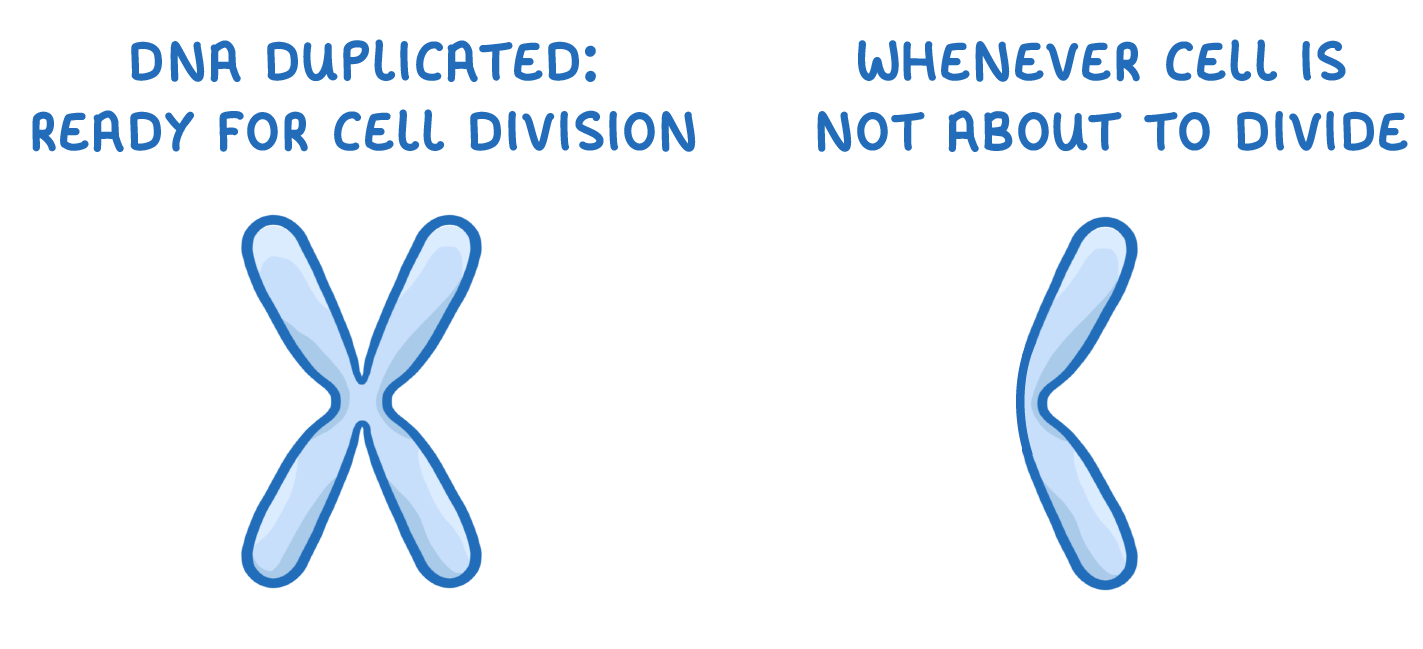DNA 1 - Chromosomes, Genome & Migration
This lesson covers:
- What 'DNA' is
- What 'chromosomes' are
- What we mean by the term 'genome', and why understanding the concept is important
What does DNA stand for?
Deoxynuclear acid
Deoxyribonucleic acid
Ribonucleic acid
|
DNA has a double helix structure. How many strands is the helix made up of?
1
2
3
|
The DNA in typical human cell is found in tight coils known as .
|
How many chromosomes are there in a typical human cell?
|
Chromosomes exist in pairs. The chromosomes in the 23rd pair are known as the _____________
Determinant chromosomes
Sex chromosomes
Last chromosomes
|
Do women have XX or XY sex chromosomes?
XX
XY
|

Remember that chromosomes only have an 'X' shape when the DNA has been duplicated ready for cell division. The rest of the time, they will look more like like an 'l'.
What is being described in the following statement?
"A small section of DNA that codes for a specific protein"
|
DNA can code for proteins by coding for the sequence in which acids are joined together.
|
What does the term 'genome' mean?
The observable characteristics of an organism
The entire set of genetic material in an organism
The sequence of amino acids in a protein
|
Some genes can cause specific diseases. We call these _________ diseases.
communicable
spontaneous
inherited
|

True or false? Understanding the genomes of different people around the world can tell us about the migration patterns of our ancestors.
True
False
|